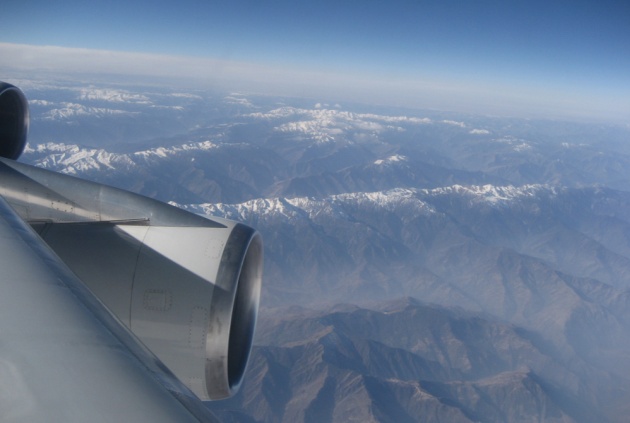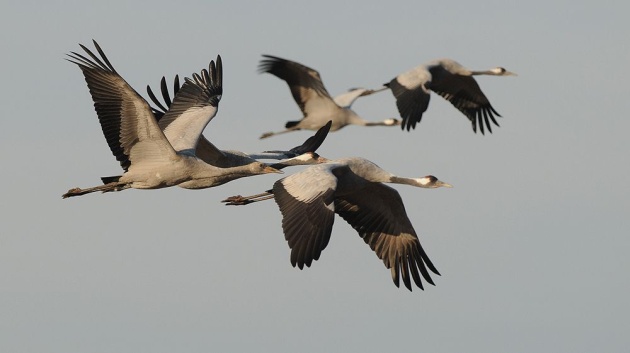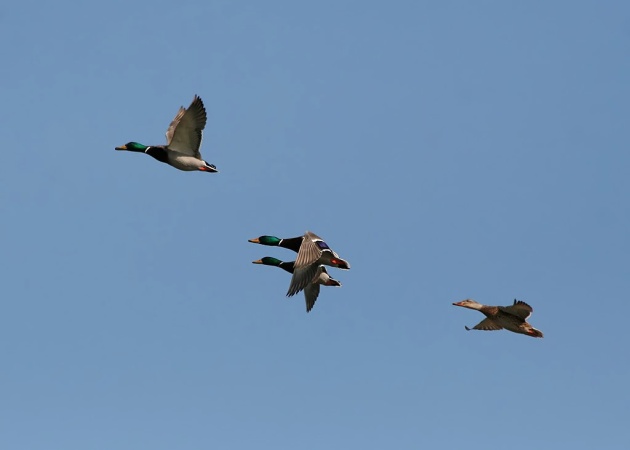
Jet airplanes cruise at 30,000 to 40,000 feet. Did you know that birds can fly at the low end of that range?
Birds’ respiratory systems are so efficient that they can pull oxygen out of very thin air. We know this because they migrate over the Himalayas.
Common cranes (Grus grus) are widespread across Europe and Asia, nesting from Norway to Siberia and wintering from Africa to southern China. Those that nest in eastern Kazakhstan and northwestern China fly over the Himalayas to spend the winter in India. They’ve been clocked at 33,000 feet!

Bar-headed geese (Anser indicus) nest in the Tibetan highlands and spend the winter in the lowlands of India. The shortest route from Tibet to the sea is to fly directly over the Himalayas, and so they do. They’ve been recorded at 29,600 feet and seen flying over Mount Everest! This video describes how they do it and asks questions for further study.
And even mallards, the ubiquitous ducks that eat bread at the boat launch, were seen migrating at 21,000 feet over Nevada.

Birds don’t need oxygen masks at those high altitudes. They just fly by.
(photo credits: All photos are Creative Commons licensed via Flickr. Click on each image to see its original:View from a jet over the Himalayas by David C. Jones on Flickr, Common cranes in flight by Ján Svetlík on Flickr, Mallards in flight by Ken Slade on Flickr, Video from FantasticAnimal on YouTube)
Thanks again, Kate, for something new and interesting. My mother always encouraged me to learn something new every day. She would have loved you!
Wow! That is truly amazing! Not only is the air much thinner for them to breath but their wings will require more work for the same lift. Maybe they compensate for this by increase speed.
It is all fascinating for sure.
Thanks for sharing,
Gene